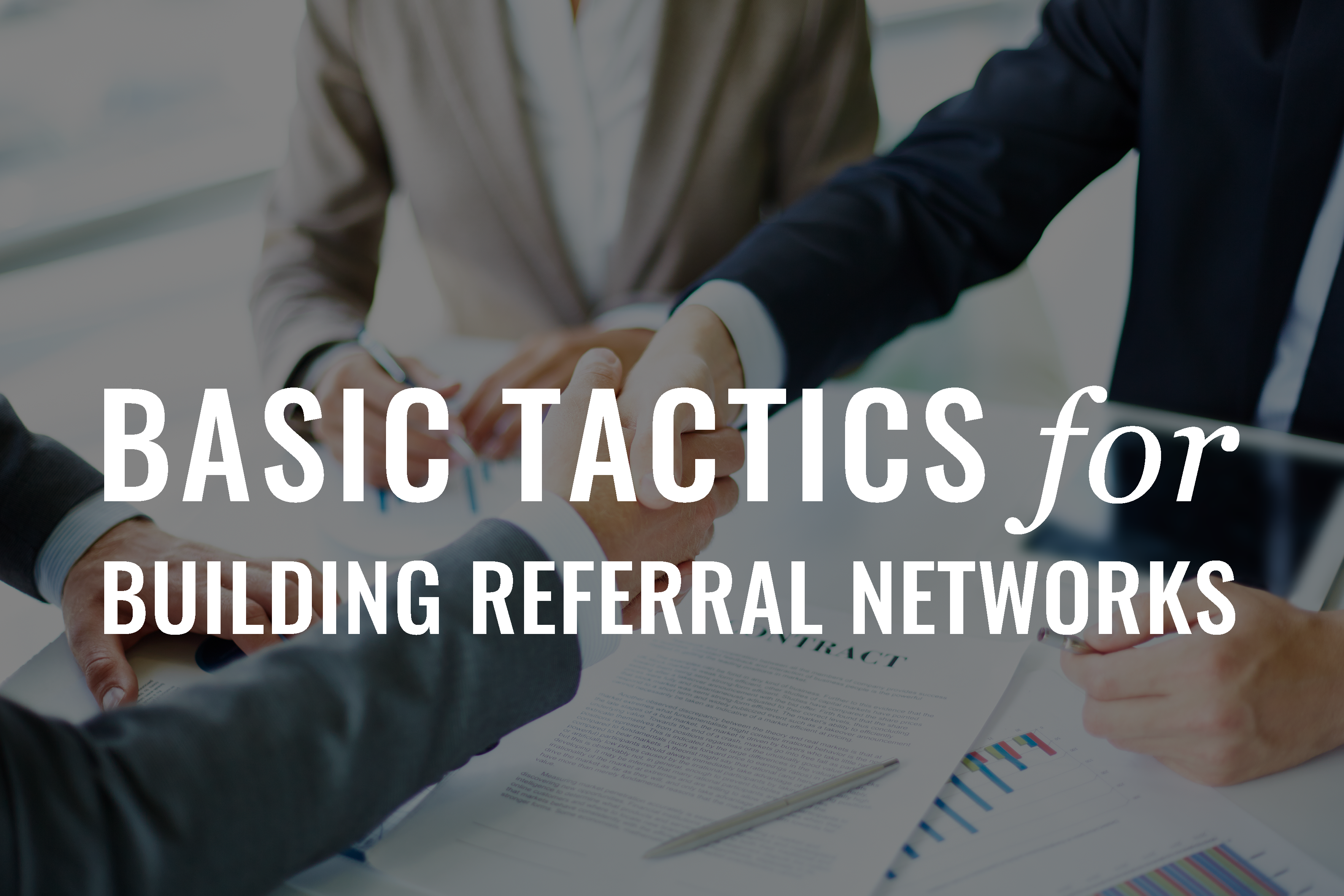 Last time, we addressed the importance of refining your tactics in attempting to acquire consistent referrals from other lawyers. This time, it probably makes sense to tell you where to develop those relationships with your colleagues, because: it’s one thing to know how to acquire referrals from other lawyers; but, it’s quite another thing to know where to find those lawyers who will make those referrals. The following is not an exhaustive list, but represents some common territory for referral-seeking lawyers, that is well-tread because of its fertility.
Last time, we addressed the importance of refining your tactics in attempting to acquire consistent referrals from other lawyers. This time, it probably makes sense to tell you where to develop those relationships with your colleagues, because: it’s one thing to know how to acquire referrals from other lawyers; but, it’s quite another thing to know where to find those lawyers who will make those referrals. The following is not an exhaustive list, but represents some common territory for referral-seeking lawyers, that is well-tread because of its fertility.
Office Share. One of the distinct disadvantages to using a home office is that it’s pretty easy to just hang out on the couch. Acquiring an office lease, even for a virtual office, forces you to get out, and to interact with colleagues and contacts, if for no other reason than that you don’t want to be wasting money on office space otherwise — that’s a fairly powerful motivator. But, if you want to be strategic about where you set up shop, you should select an office share including attorneys with practice areas complementary to your own. It used to be that solo attorneys could construct loose affiliations and collect them into semi-formal entities; but, the professional association is now a dead letter in Massachusetts. Even so, you can build your referral pipelines through the shell of that former vehicle. Sharing space with other lawyers, even if you’re not advertising together, is a fruitful way to acquire new business, since those other lawyers are also essentially lazy: if a referral can readily be made to an attorney across the hall, no one’s picking up the phone. Certainly, office share situations provide additional concrete advantages, including: access to mentors, shared costs and the potential for acquiring overflow work — all things especially important to new attorneys.
In-Person Networking. Especially in a world dominated by screens, in-person networking retains the highest place in attorney marketing, because it is the best way to make a visceral, lasting connection with your referral sources, and in part because it takes more effort than it ever has before (making it more valuable). The ability to reach anyone via email and social media means that we’re far less likely to pick up the phone, or to go out and to try to connect with old friends, or to meet new ones. Even if you initially met someone online, connecting with them in-person is far more affecting, and burns a deeper memory after it. It’s probably true that the more in-person connections you make and maintain, the more robust your referral pipelines will be. Since those in-person networking opportunities are now more precious than they have ever been, make sure you’re polished about your approach: establish your networking targets, have your elevator pitch primed and remember to connect the dots to the next opportunity: leave ‘em with a call to action.
Social Media. Most lawyers get into social media because they think it’s going to get them clients, directly. But, that’s infinitely more difficult than acquiring referral sources through social media. Some potential clients will get news from your social feeds; but, they’re less likely to interact with you than referral sources — and, this is especially true in certain practice areas: if you’re an OUI attorney, your clients and potential clients will not like your Facebook business page or aggressively review you. Not to mention that real-time interactions with potential clients can become problematic from an ethics standpoint, if those are not handled appropriately — issues related to impermissible solicitation and questions around when the attorney-client relationship would attach are in play. If you view social media as the world’s cocktail party, then that’s probably the better lens through which to develop your online referral chains. Your content is your active supply chain, and you will converse with other users over your content stream as well as theirs; those interactions are where you can begin to develop relationships. The power of social media is that, whereas you were previously limited to pulling referrals from a local pool, you are now able to reach a global collection of other lawyers and other professionals. Opportunities, including for referrals in and referrals out, abound in that kind of open environment. This is not say that you will never get clients directly through your social media activity; you may. But, you are far more likely to get referrals from other professionals, such that it makes sense to play the percentages in developing and outfitting your online personae.
Mentors. Lawyers will think of their mentors for substantive practice advice, and occasionally for tips on how to run the administrative/business side of their practices. But, that begs the questions: What happens after that? When you’ve figured out those two major elements of being an entrepreneurial lawyer, and you’re ready to become a mentor to other lawyers, what do you do with your own mentors? Drop them entirely? Admire them from afar? Suggest their particular brand of guidance to younger lawyers? . . . How about converting those overripe mentoring relationships into referral arrangements? I mean, your mentor, if you’ve worked with her long enough, will understand that she has trained you to practice like her across certain aspects of your business; and, if she has stuck with you for a while as her mentee, she probably respects your acumen at some basic level. Who better to give referrals to, than her very own Mini-Me. Attorneys often view mentorship arrangements as fixed in time, like a mild apprenticeship from which you ultimately graduate. Isn’t it far wiser to try to continue those relationships, in a newer, more profitable vein. The mentor-mentee relationship should be changed to a referral relationship, not ended.
. . .
Liner Notes
‘Diamond Joe’ by James Taylor featuring Mark Knopfler
Mark Knopfler, as you may know, is the former lead singer, guitarist and songwriter for Dire Straits. They made some hay back in the day. But, Knopfler’s solo career has also received critical appreciation.
I found this little gem randomly on YouTube; it’s apparently a Target-exclusive bonus track attached to Taylor’s new ‘Before This World’ album. This is an old cowboy song, which Taylor sings and to which Knopfler applies a reggae-fused downbeat. I don’t love it; it sounds dissonant.
If you’re looking for a better Taylor version of this song, check out his cover from the 1971 Fillmore East concert. If you’re wanting a better Taylor-Knopfler tag team, listen to ‘Sailing to Philadelphia‘, a song about the drawing of the Mason-Dixon Line, with Knopfler singing Dixon’s part, and Taylor doing Mason. The song appears on Knopfler’s second solo album, from which it is the title track.




